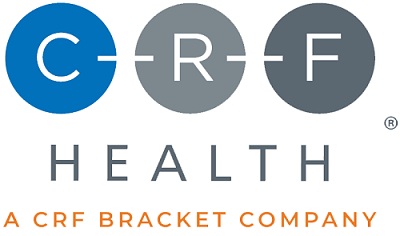Clinical oncology research is unique when compared to other therapeutic areas. Cancer patients experience substantial physical and psychosocial consequences of the disease and its treatment and much of the symptom burden occurs outside the clinical environment.
Oncology research is uniquely poised to benefit from both patient-reported outcomes and other clinical outcome assessment measures.
Research suggests that 20% of oncology trials do not recruit enough participants1. Data also suggests that only three percent of patients with cancer participate in clinical trials2. Considering the stats, it’s clear that there is significant work to be done to improve accessibility to clinical trials for cancer patients. This blog will look at how electronic data capture solutions can help encourage patient recruitment and simplify the trial process, in order to reduce the burden on participants and improve overall study outcomes in these trials.
Over recent years there has been growing interest in how electronic clinical outcome assessments(eCOA) solutions can be utilized within oncology clinical research to counteract many of the challenges faced by researchers in this area. Patient reported outcome measures (PROMs) enable researchers to make a patient-focused assessment of the burden and impact of the disease, and to understand how treatment impacts patient functioning and wellbeing.
In addition, regulatory agencies such as the European Medicines Agency have noted that electronic data capture methods may offer more convenience to some patients and may increase data quality, reduce missing data (allowing automatic reminders to be sent) and potentially reduce data entry errors3. Furthermore, PRO data provides valuable information relating to the risk-benefit ratio which is critical for making regulatory conclusions about a specific compound3

Patient and Caregiver Benefits
A patient-centric focus is one of the biggest benefits eCOA solutions provide to oncology patients. As a patient’s condition progresses, or during certain cycles of treatment,eCOA may provide much needed flexibility. For patients who are too ill to attend site, eCOA solutions can be deployed to support the collection of PROMs outside the clinic. This may include the completion of questionnaires at home using the web or a handheld device.eCOA also allows patients to re-activate incomplete or interrupted visits so that they can pickup where they left off. This can be incredibly important in the situation where sites are having difficulty managing associated conditions or side effects. Furthermore, eCOA allows for the easy addition of unscheduled visits which are critical for when a patient requires an unanticipated visit to site for adverse event review.
What’s more, patients that are very ill but still want to participate in clinical trials may be offered the option to elect a caregiver role on their eCOA device. This allows the caregiver to input data on behalf of the patient, supporting them throughout their journey using Observer Reported Outcomes (ObsRO). On-device training is provided to help caregivers feel comfortable with the process and sustains compliance by ensuring the data is reported regularly per the study protocol.
In many oncology studies, particularly those involving cycles of aggressive therapy, the routine at-home collection of symptom and side effect data and their impact are rarely captured. Typically, the burden of treatment on the patient is considered too great to expect additional daily capture of these data. However, the picture of the impact of treatment during each cycle is valuable to the ongoing management of the individual patient, and to understand more about the treatment effects to optimize its use. Observer reported outcomes can be used to collect this information, and electronic provision enables effective remote monitoring of the patient during each cycle recovery period and easy review of the data during the next cycle visit.
Moreover, other ways of passively collecting COA data may be particularly valuable in these scenarios and be incorporated without burden to the patient. Accelerometers, for example, are able to passively accumulate data on the activity and sleep patterns of the patient during the at-home recovery period associated with each cycle of treatment. These can provide insightful information describing how the patient is coping with the medication side effects – and add to the picture provided by the patient at the next cycle review visit where they may be beginning to feel better and so may not accurately reflect the true impact of the treatment.

Site Benefits
With so many patients, visits, and different schedules of administration, eCOA solutions provide sites with the tools and resources they need to reduce the administrative burden of managing patients. For example, eCOA solutions enable sites to easily schedule patient visits and automatically send reminders to alert patients about upcoming visits. eCOA solutions also empower sites to effortlessly monitor patient compliance to the protocol and track patient pain, symptoms, and questionnaires all from one system, where information for each trial participant is stored. Finally, when the patient arrives for their visit, eCOA solutions present the protocol-defined questionnaire for that visit in the correct order so that the site doesn’t need to worry if they have the right version or incorrect patient information. These tools drastically reduce administrative time and effort by automating the data collection process.
Reporting Benefits – Adverse Events and Concomitant Medication Data
Growing evidence suggests that adverse events are best captured directly from patients4. eCOA solutions support this with their ability to capture symptom data from which the investigator can interpret adverse events. PRO-CTCAE, a patient reported outcome measurement system developed to evaluate symptomatic toxicity in patients on cancer clinical trials5, can also be incorporated into eCOA solutions to make reporting adverse events simple.
eCOA solutions also support the ongoing capture of concomitant medications by offering a predefined, personalized list of medications to choose from, as well as the ability to “nickname” medications for easier patient tracking. Collecting this information on an eDiary alongside other study questionnaires means that the patient can report concomitant medication intake on the same day, resulting in more accurate and reliable data.
Post-Progression Studies Benefits
With regulators driving sponsors to include post-progression/follow-up periods in their oncology trials, eCOA solutions can help reduce the burden on patients by remotely collecting data as site visits become less frequent. The key to keeping compliance high in this phase of the study is to deploy a flexible solution. The many different eCOA modalities and approaches available, e.g. site or field-based collection, provisioned or patient’s own device, web-based or app-based capture, provides this without increasing patient burden.
Final thought
This blog has simply scratched the surface of a wealth of evidence available demonstrating that the use of eCOA in oncology trials can address many of the challenges faced by researchers in this area, leading to improved data quality, as well as better communication and engagement between patients and the investigating team.By meeting the ALCOA standard (attributable, legible, contemporaneous, original, accurate) in a way that traditional paper-based data capture methods cannot, eCOA solutions contribute to higher compliance. With an increase in global studies, they also make it easy to capture PROs from anywhere in the world and in real-time.
There is no doubt that, if implemented correctly, the use of eCOA in oncology clinical trials can improve overall study outcomes and its use represents a much-needed step forward for researchers, which could ultimately lead to better care for cancer patients worldwide.
References
1. Bennette, C. S., Ramsey, S. D., McDermott, C. L., Carlson, J. J., Basu, A., & Veenstra, D. L. (2016). Predicting low accrual in the National Cancer Institute’s cooperative group clinical trials. JNCI: Journal of the National Cancer Institute, 108(2).
2. English, R., Lebovitz, Y., & Giffin, R. B. (2010). Transforming clinical research in the United States: challenges and opportunities. In Workshop Summary.
3. Basch, E., Abernethy, A. P., Mullins, C. D., Reeve, B. B., Smith, M. L., Coons, S. J., … & Frank, E. S. (2012). Recommendations for incorporating patient-reported outcomes into clinical comparative effectiveness research in adult oncology. J Clin Oncol, 30(34), 4249-4255.
4. Basch, E., Campbell, A., Globe, D., Kluetz, P., Kozak, M., Minasian, L., … & Spears, P. (2015). Capturing Symptomatic Adverse Events Fromfrom the Patients’ Perspective: The Potential Role of the National Cancer Institute’s PRO-CTCAE Measurement System. Cancer Research.
5. NCI (2018, September 2018). The PRO-CTCAE Measurement System. Retrieved from URL https://healthcaredelivery.cancer.gov/pro-ctca/measurement.html






















